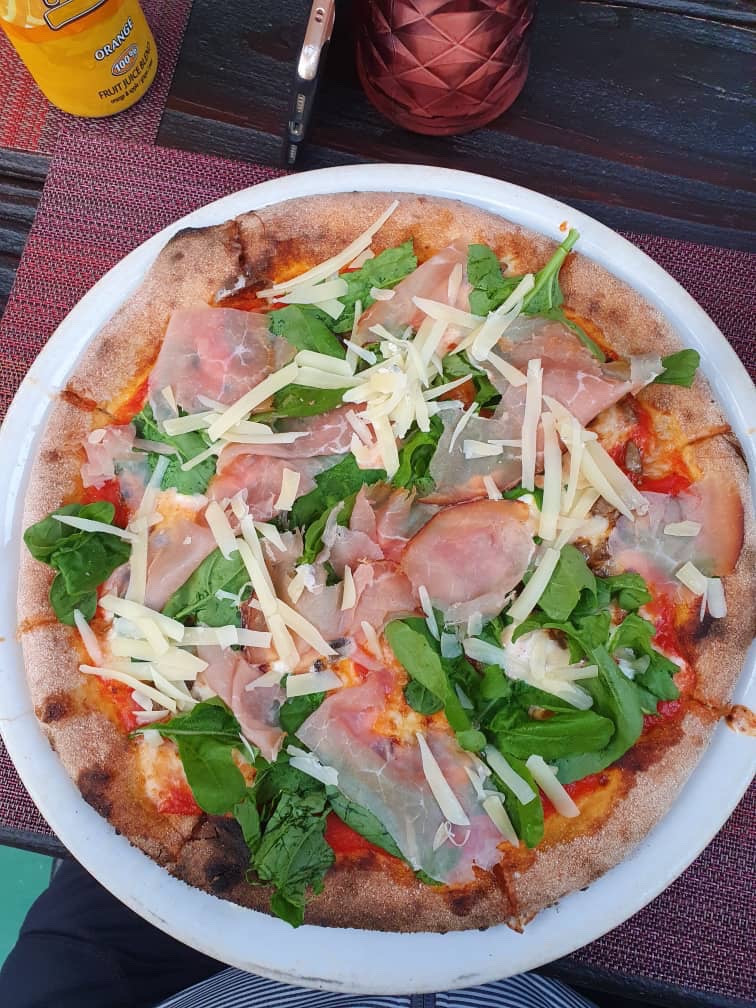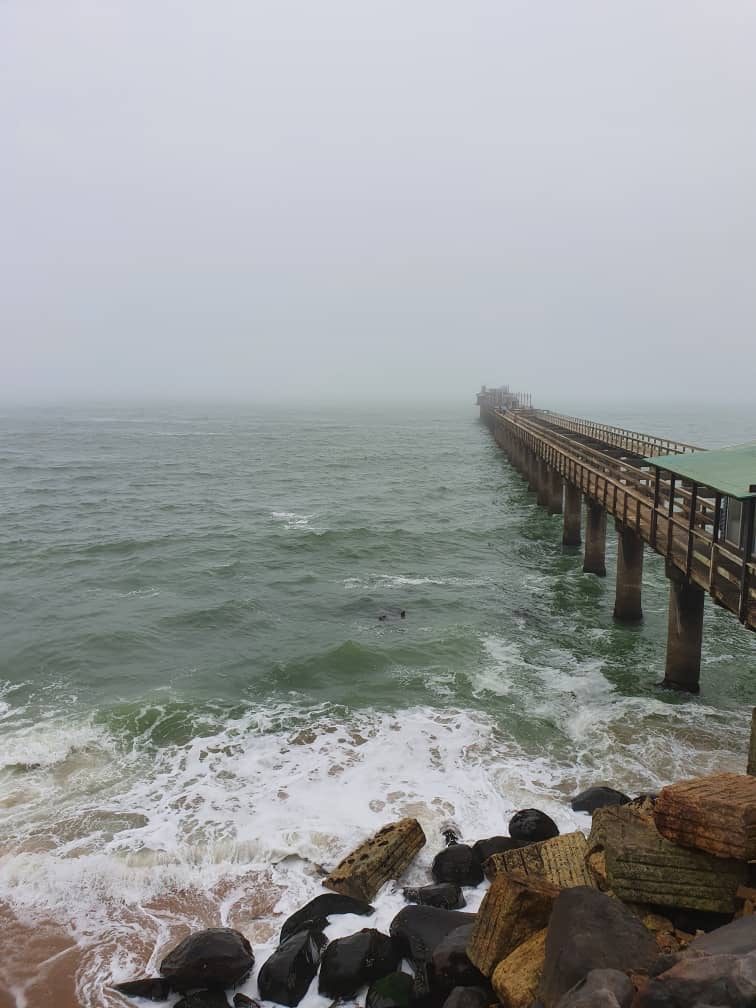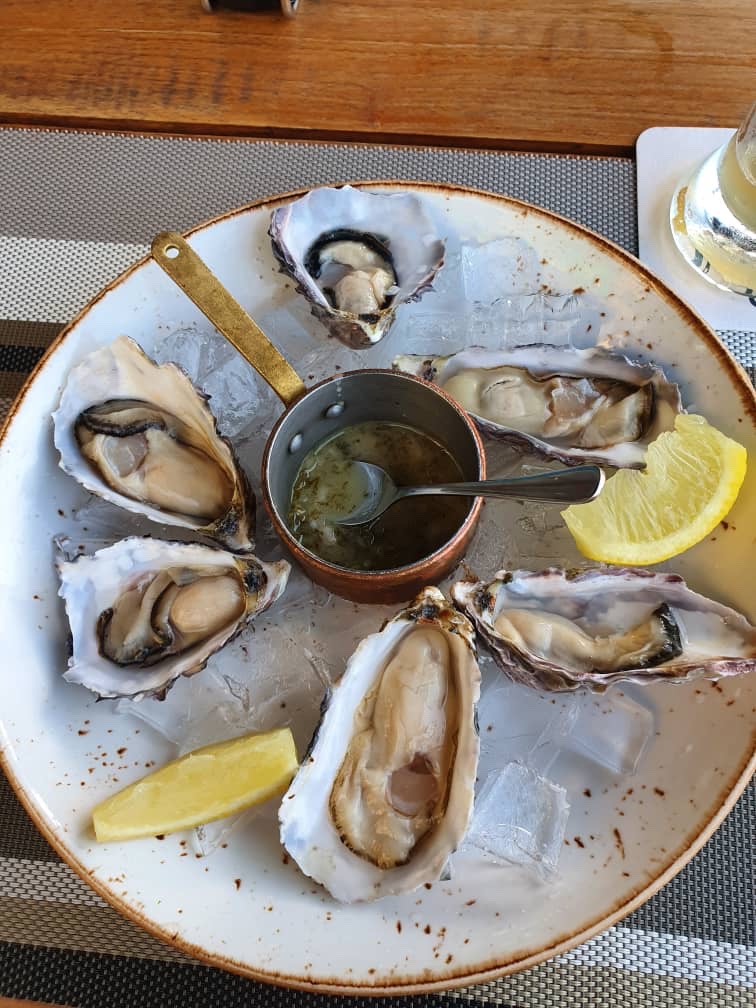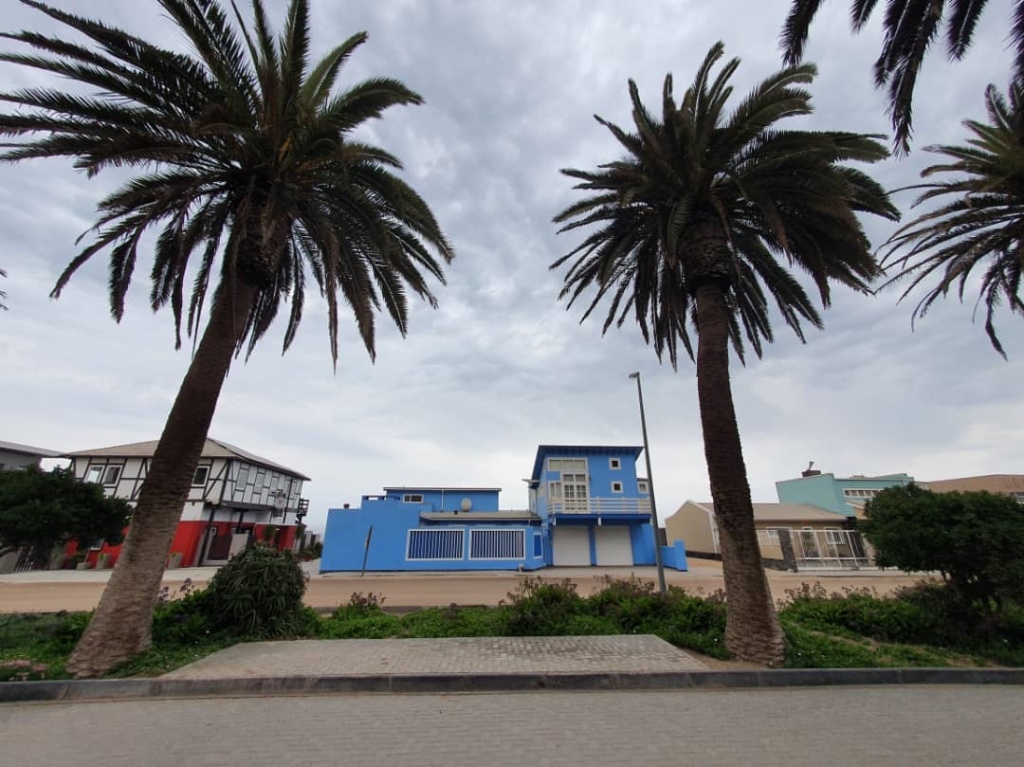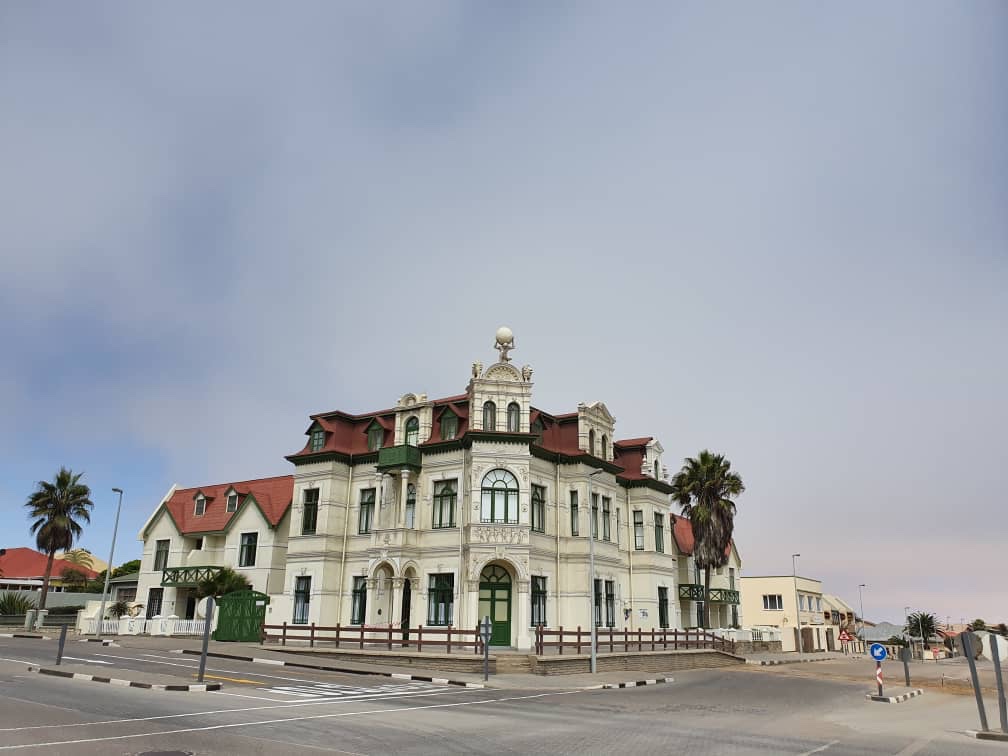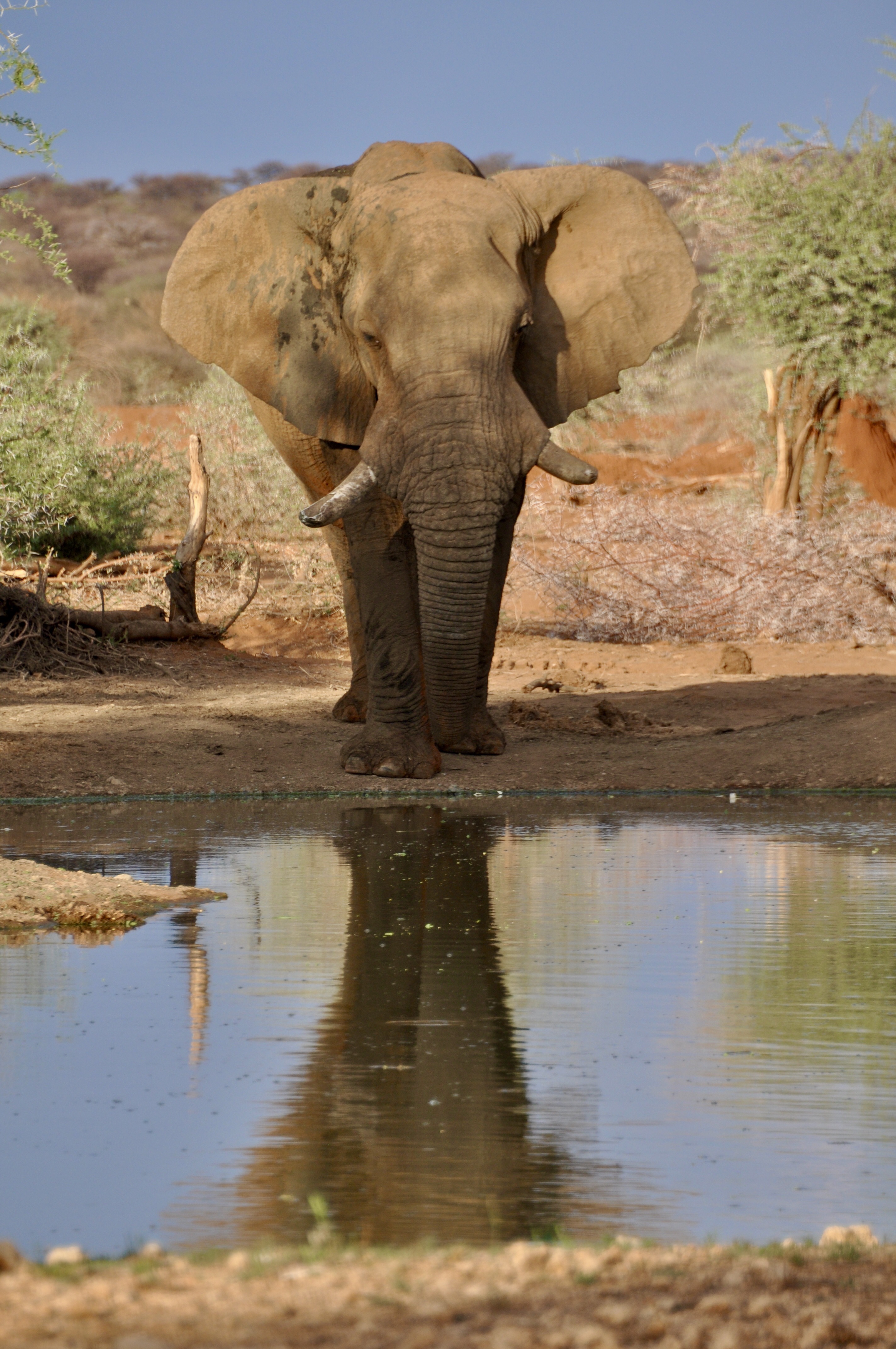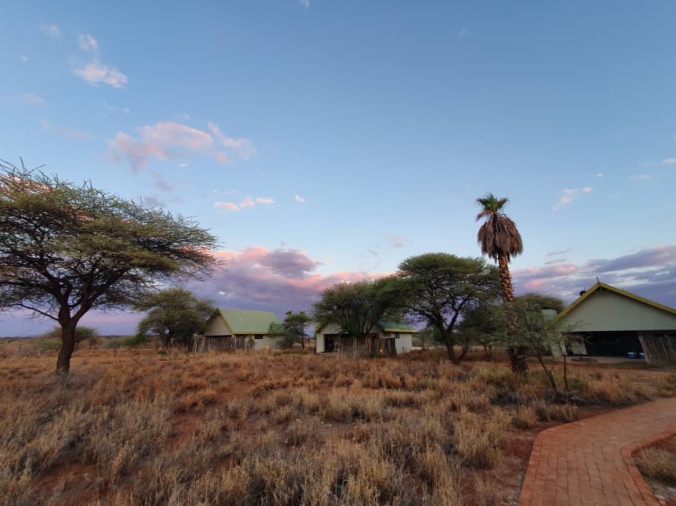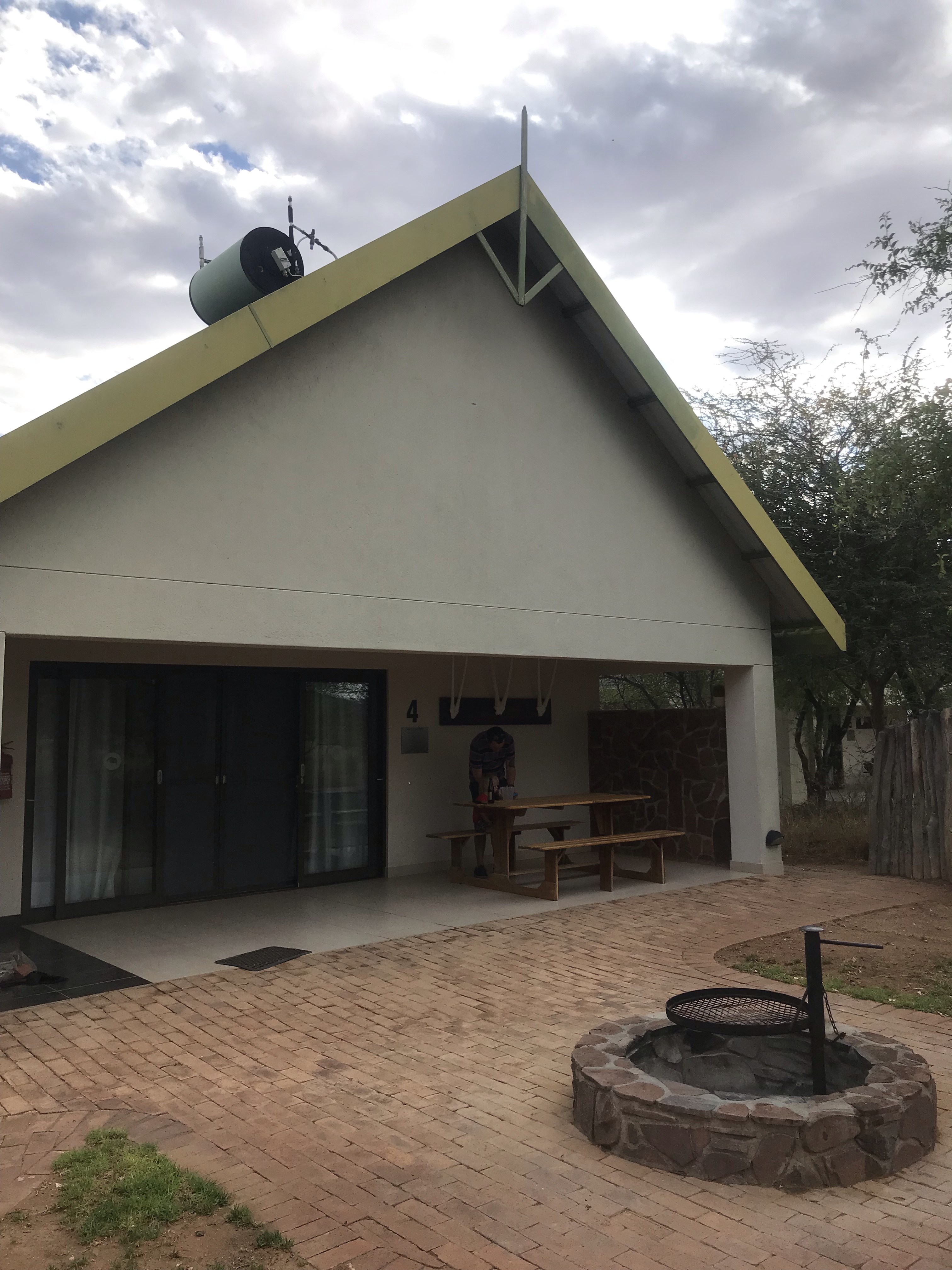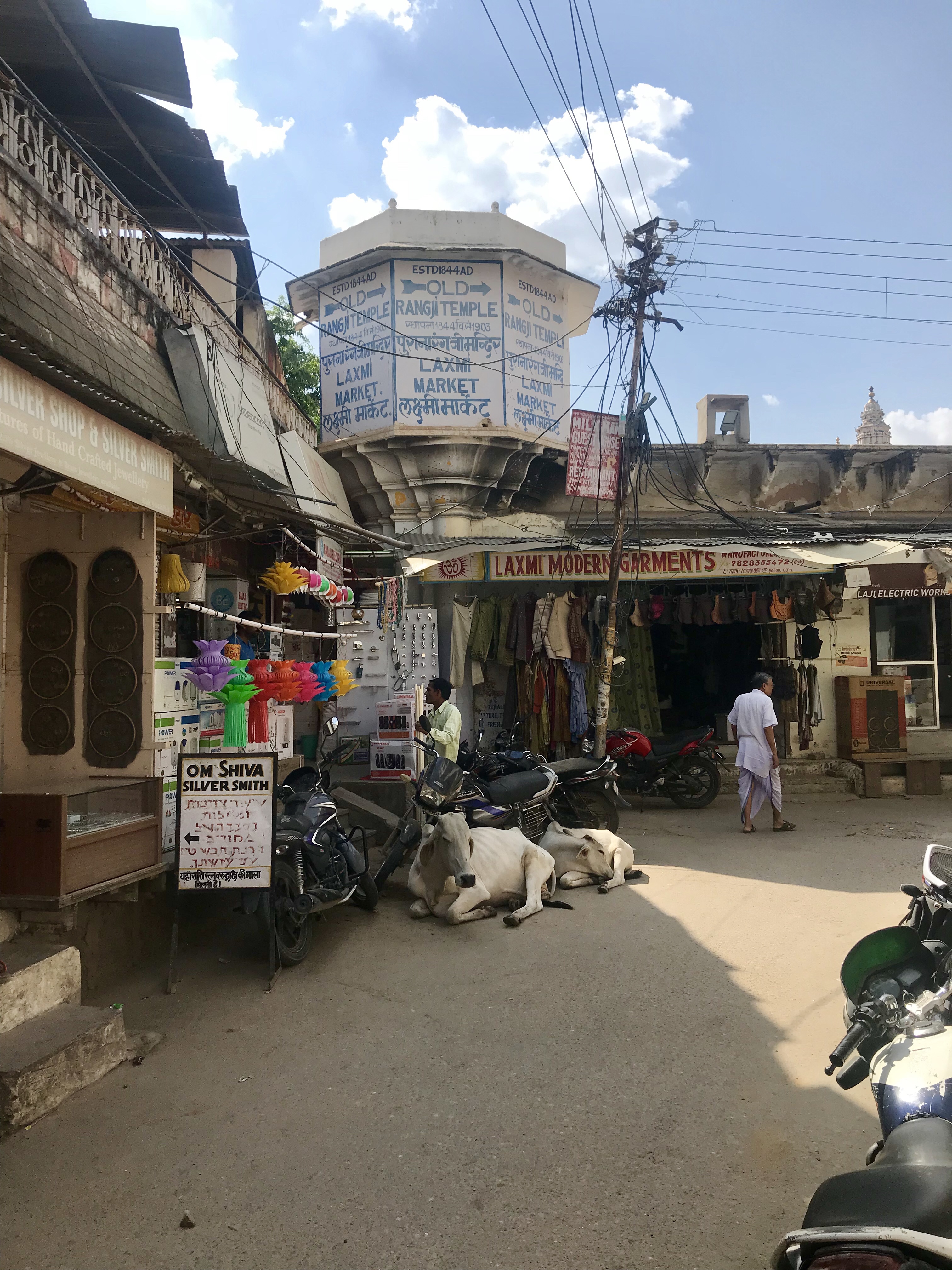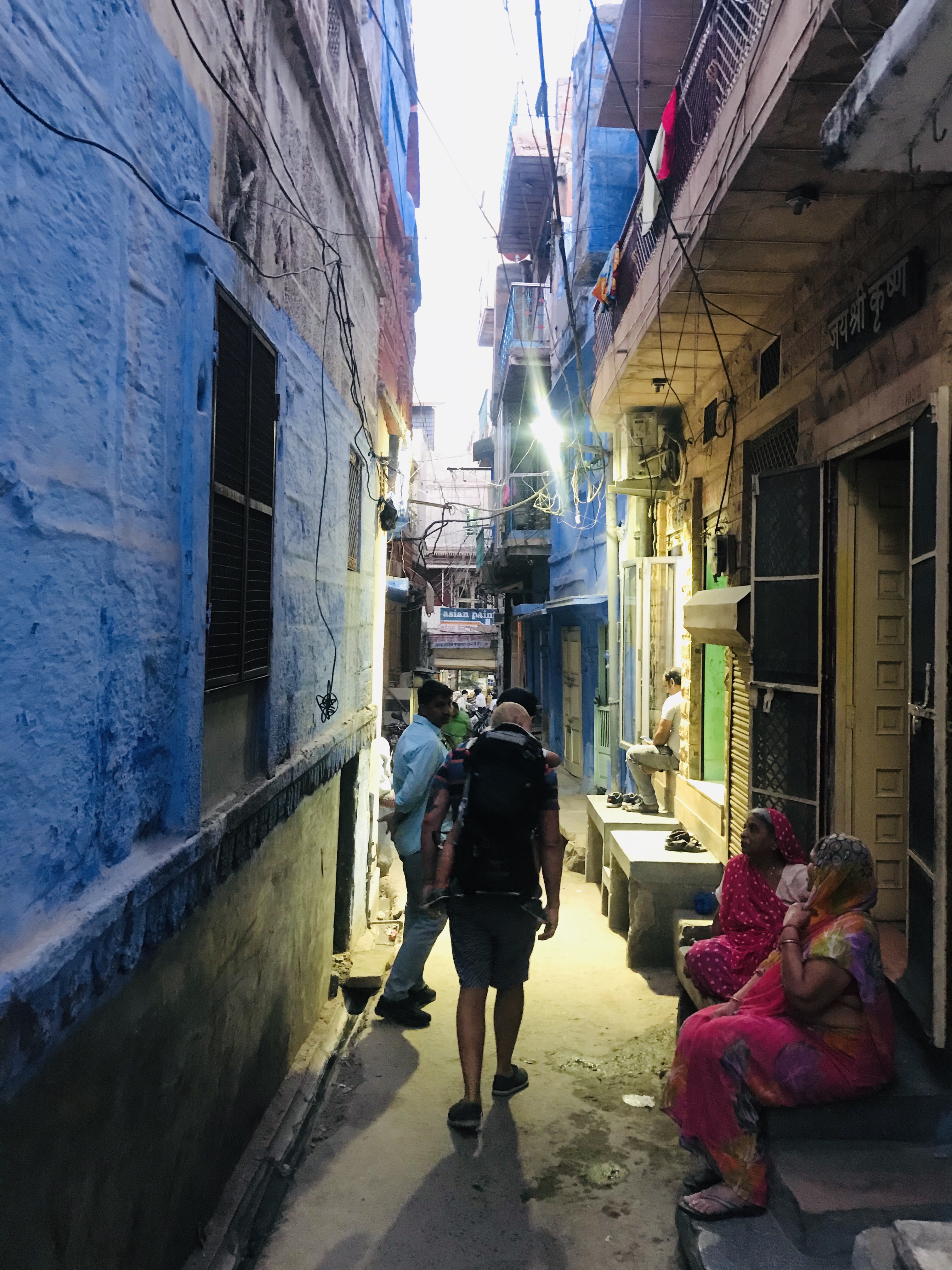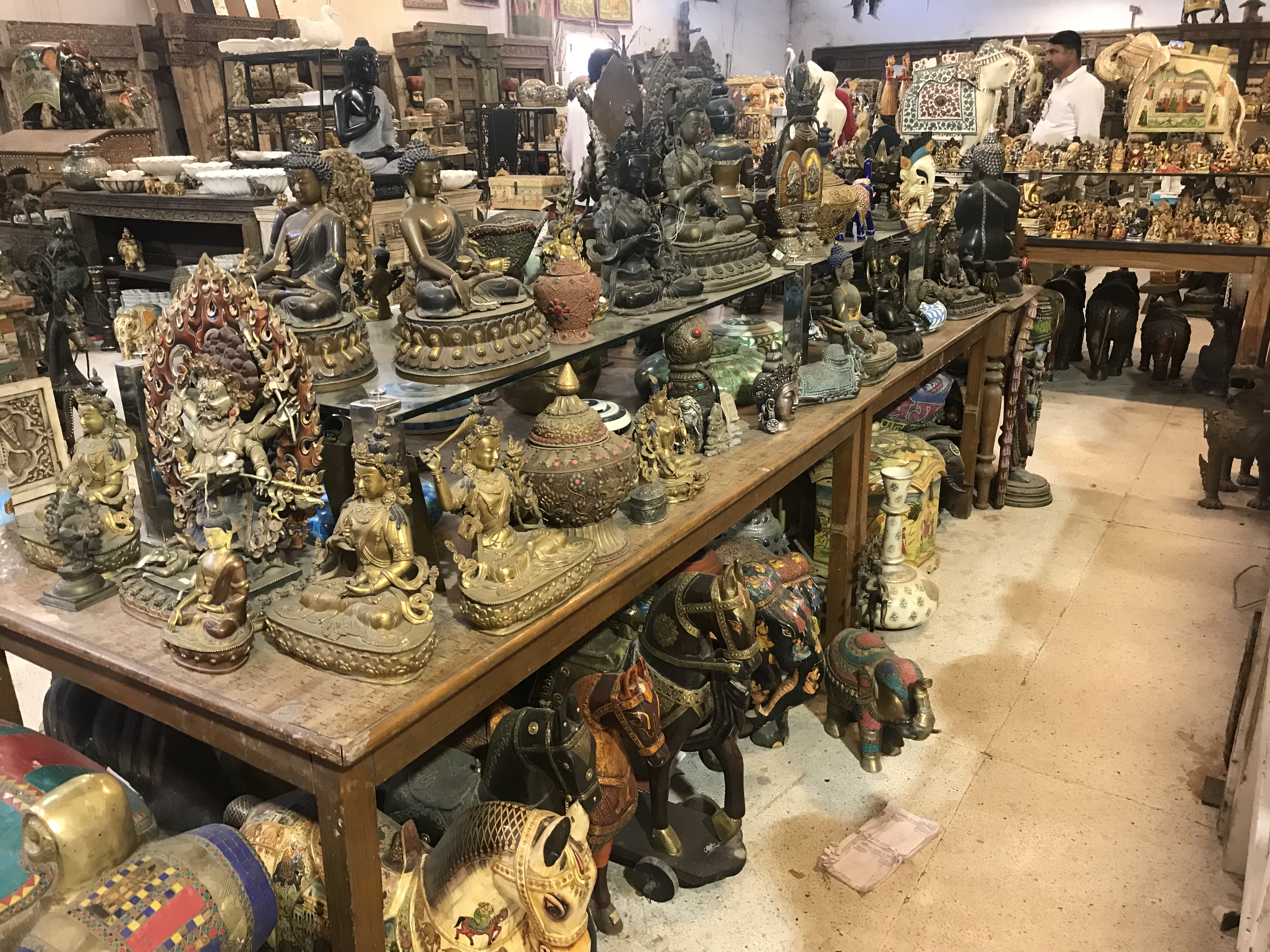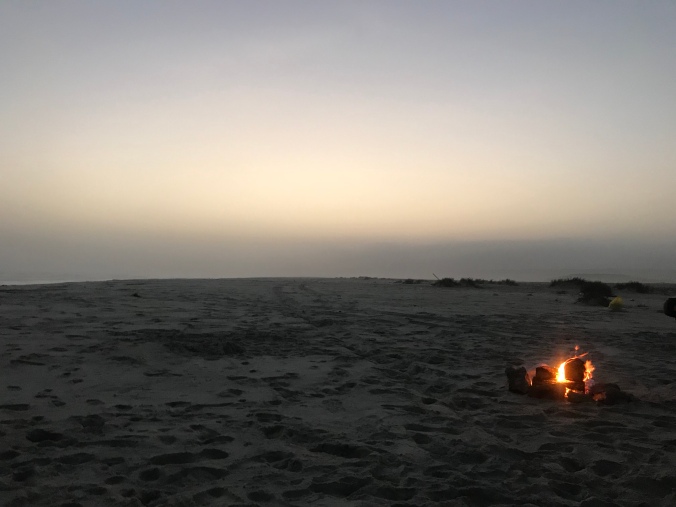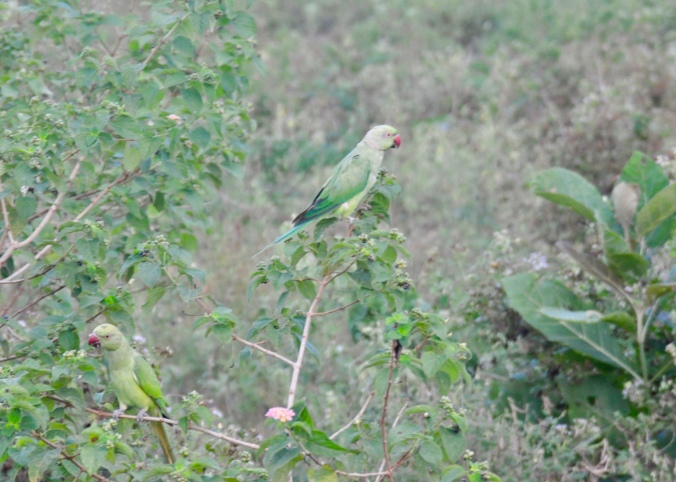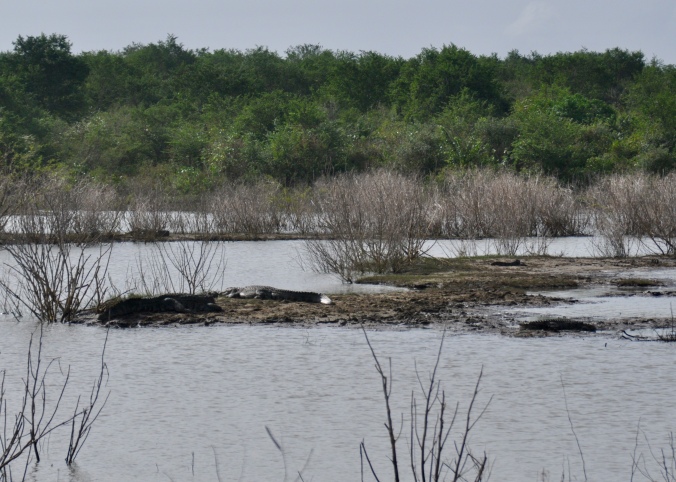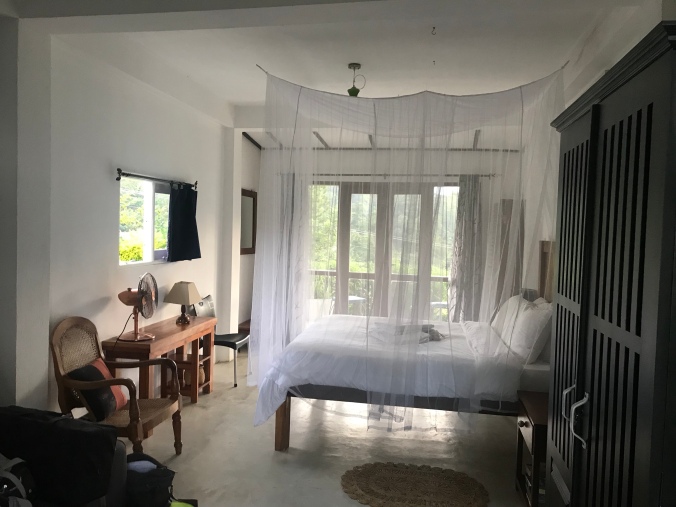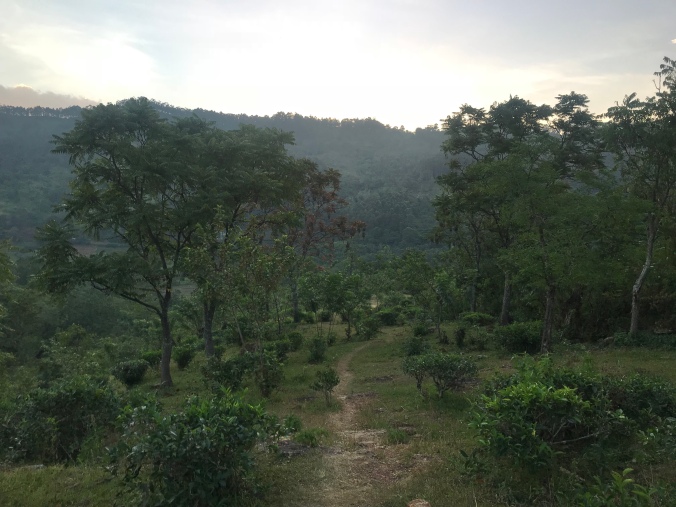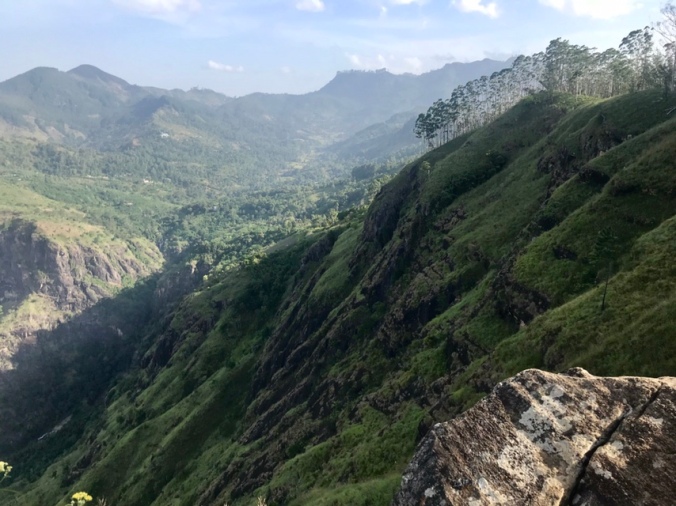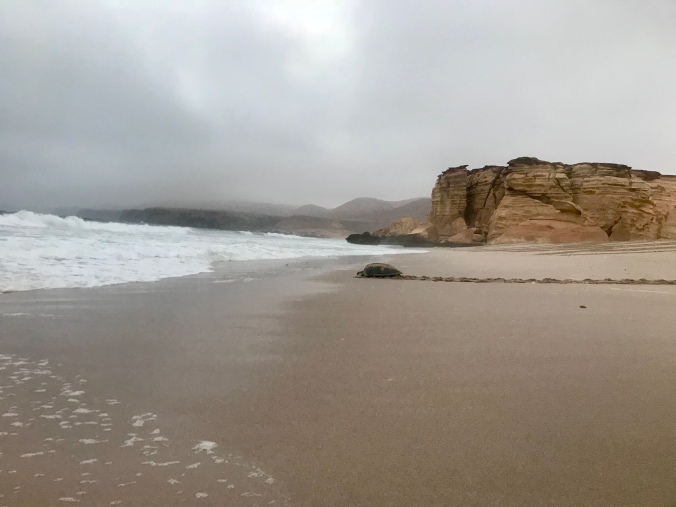
A mama turtle heading back to the sea, with a baby turtle following behind
About a month ago we visited Ras Al Jinz, a turtle nesting and research area on the eastern-most tip of Oman. Ras Al Jinz is a protected nature reserve, and it’s one of the few places in the world where green turtles nest year-round. Peak nesting season is June to August, and peak hatching season is September to November.
We departed Muscat at 10 am, and by noon we’d reached the white sandy beaches of Fins. After a nice lunch and swim, we got back on the road around 2:30. We arrived at the Ras Al Jinz turtle reserve and research center around 4:30; after we checked in, we made our way up to our tent. If you do the drive straight through, without stopping, the trip from Muscat to Ras Al Jinz takes about 3.5 hours.

Camels along the road en route to Ras Al Jinz
There are two lodging options: eco-tents and a hotel. I can’t speak for the hotel, but the tents are pretty great. There are tents for 2 or 4 people, and whichever tent size you pick, they are surprisingly large. We got a tent for 2 people, and there was plenty of space for M’s travel cot, plus a table, chairs, an A/C unit, television, and a minifridge.

Our tent
One strange thing about the tents: there is a long paved walkway leading up to the tents (it’s a bit of a hike), and there are signs saying you’re not allowed to drive on the walkway. But then there’s a large parking area up by the tents. We off-roaded a bit to drive up the tents, keeping to the unfinished area next to the walkway. I don’t know if a low-clearance vehicle could do it, but we had no problem in our Jeep.

A view of the tents from a nearby hill. Note the lovely parking area!
There was some down-time between getting settled into the tents and dinner, but there was space for the kids to run around and play. After spending several hours in the car, M was happy to finally be free, and Nate and I were happy with the bottle of wine and snacks that we’d brought with us.
Dinner at the resort starts at 7:00, and the price is apparently negotiable. It was a decent spread, with Indian and continental options. Nothing particularly special, but not bad either.
When you’re staying at Ras Al Jinz, you have two opportunities to see turtles: once at night, around 9 pm, and again in the early morning, around 5 am. I’ll tell you now that I enjoyed the morning viewing a lot more; it’s also the best one for taking pictures and kids will find it more interesting too. At night you basically just get to see the turtles laying eggs, and there are mobs of people because the tour is open to people who aren’t staying at the resort, whereas the morning tour is only for those staying at the resort. In the morning you can see the turtles in nests laying eggs, and also making their way back to the sea.
The resort and buildings are set quite a ways back from the beach, and for either viewing, plan on walking at least half a mile out to the beach on a dirt road or in the sand, tromping around in deep sand once you get to the beach, and then walking half a mile back. It’s not strenuous or anything, but it might be difficult for anyone with mobility issues.

A mama turtle digging a pit in which to lay eggs
Around 8:45 pm we elbowed our way through crowds of people and made our way down to the beach with a tour guide. The guides would message each other with the turtle locations so that we could (ideally) quietly and slowly, in a single file line, walk along the beach and see the turtles laying eggs and flapping in their sandy pits. With that many people, you can’t keep everyone quiet and following directions. If I were one of those turtles, I would have been pretty annoyed. But it was a neat experience, and definitely something I’d never seen before!

Another mama turtle heading back to sea after laying eggs
The next morning we woke up at 4:15 am to make it down to the main building by 4:55 to head back out to the beach. Poor M did not want to wake up, and eventually I told him we were going to see turtles. He leapt up and practically jumped out of bed, wide awake and ready for action!
The sun was rising as we walked back down to the beach, and we spent about 90 minutes at the beach, watching the mama turtles make their way back to the ocean. Our guide also had two baby turtles in his dishdasha pocket, which he set free on the beach. Those little guys frantically made their way to the ocean as quickly as possible, and it was one of the cutest things I’ve ever seen.

Another mama slowly making her way out of her sand pit towards the sea at 5 am

All the turtle tracks leading down to the beach

Our guides on the beach with another mama turtle emerging from her nest
After watching the turtles in the morning, we headed back to the main building for breakfast. It was a good spread, but the definite highlight was the espresso machine. I need a solid 8 hours of sleep to function, and 5 hours just won’t do it for me. Coffee with added espresso shots to the rescue!

The view down towards the beach from the main building. It’s maybe a half mile walk each way.
We trekked back to the tent, packed up, and hit the road by 8:30 am. On the drive back we stopped at Ras Al Hadd, the ancient city of Qalhat, and Wadi Tiwi. Other options could be stopping at Sur, Wadi Shab or Bimmah Sinkhole, or even checking out more of the beaches around Fins. There’s so much to do in that area!
If you wanted to make a whole weekend out of it, you could go to Bimmah and then camp at Fins one night, go to Wadi Shab and Sur on your way to Ras Al Jinz the next day, overnight at Ras Al Jinz, and then do Wadi Tiwi on your way home.
I’d highly recommend Ras Al Jinz, especially to those with children. In fact, we’re planning to go back again later in the year!





